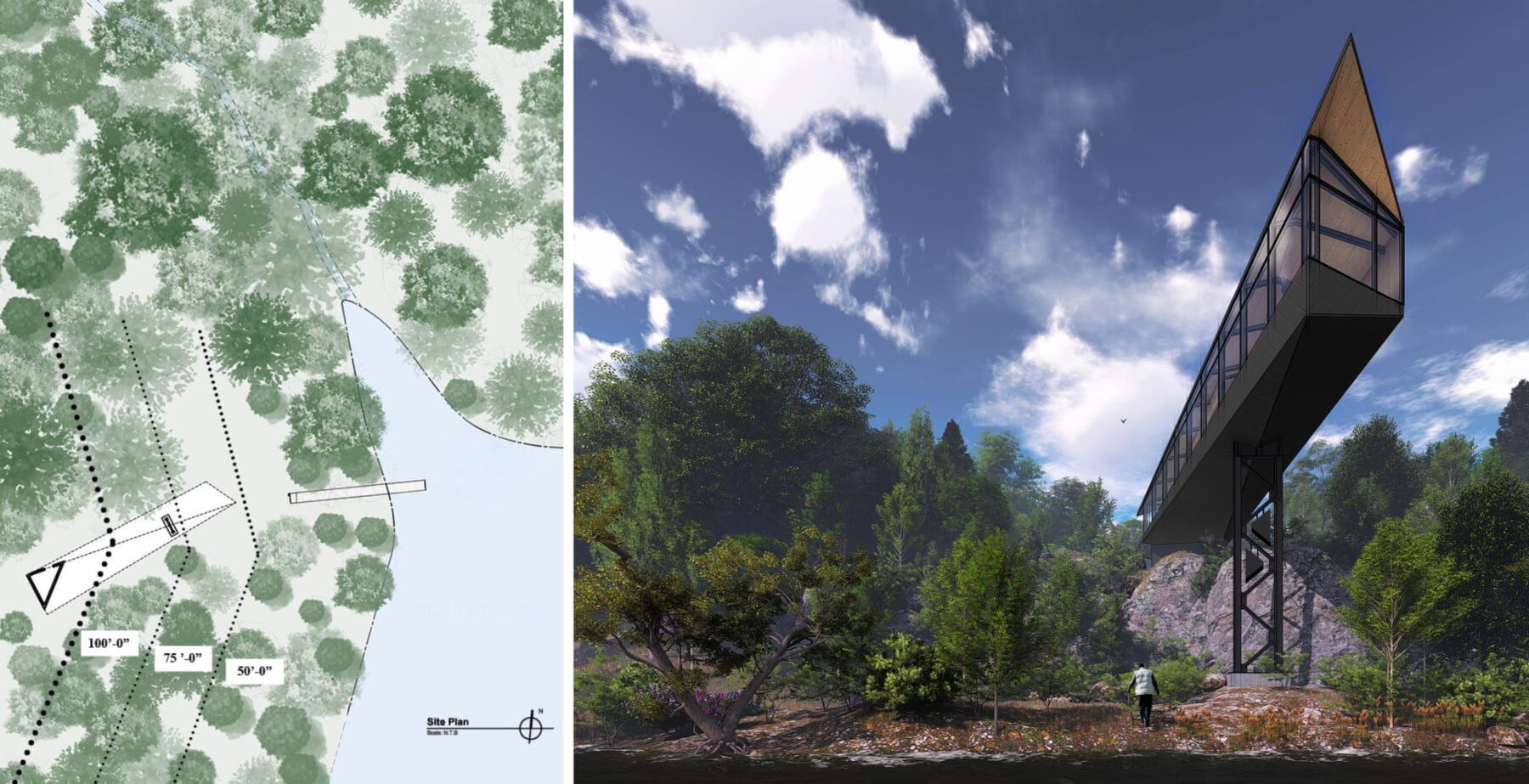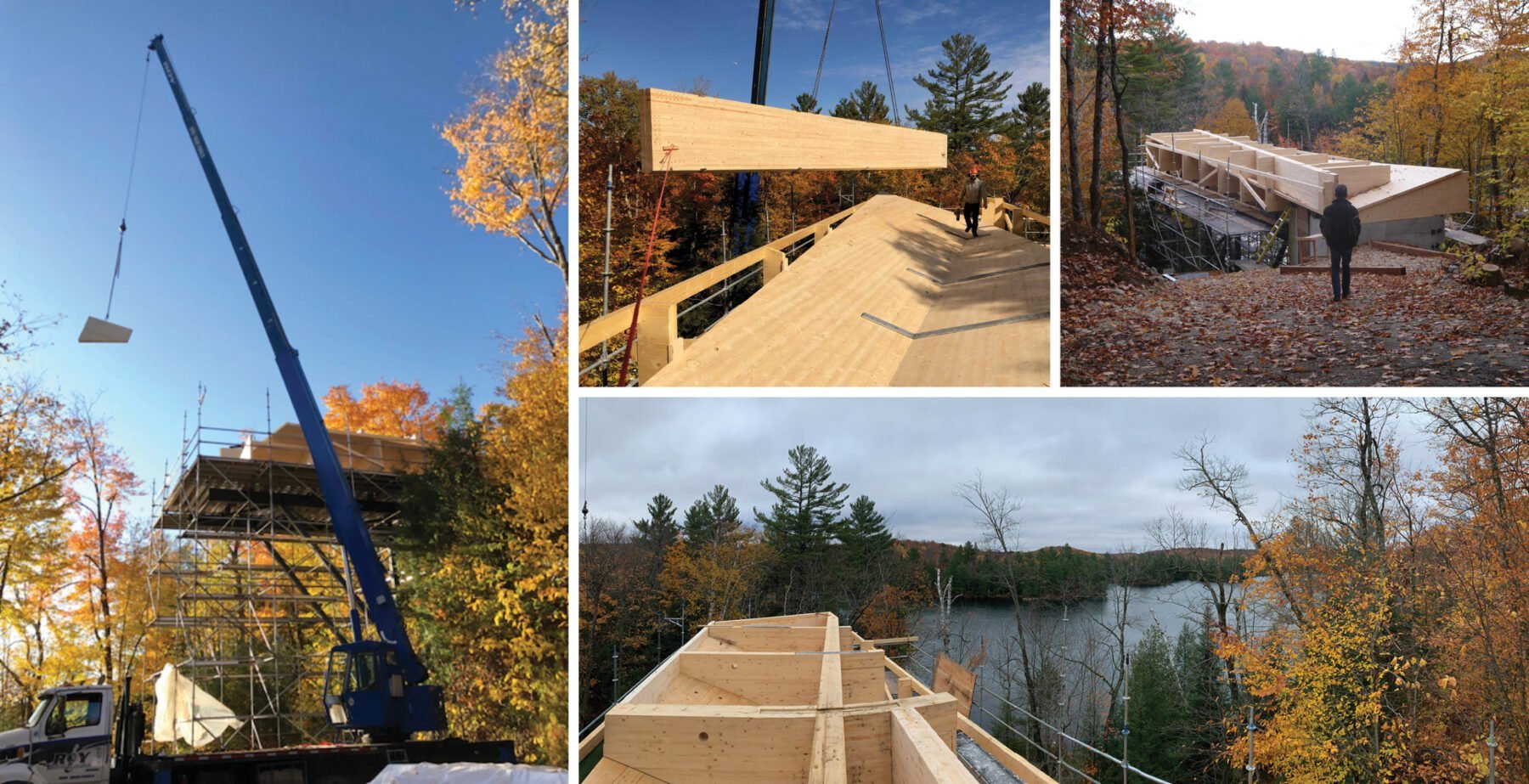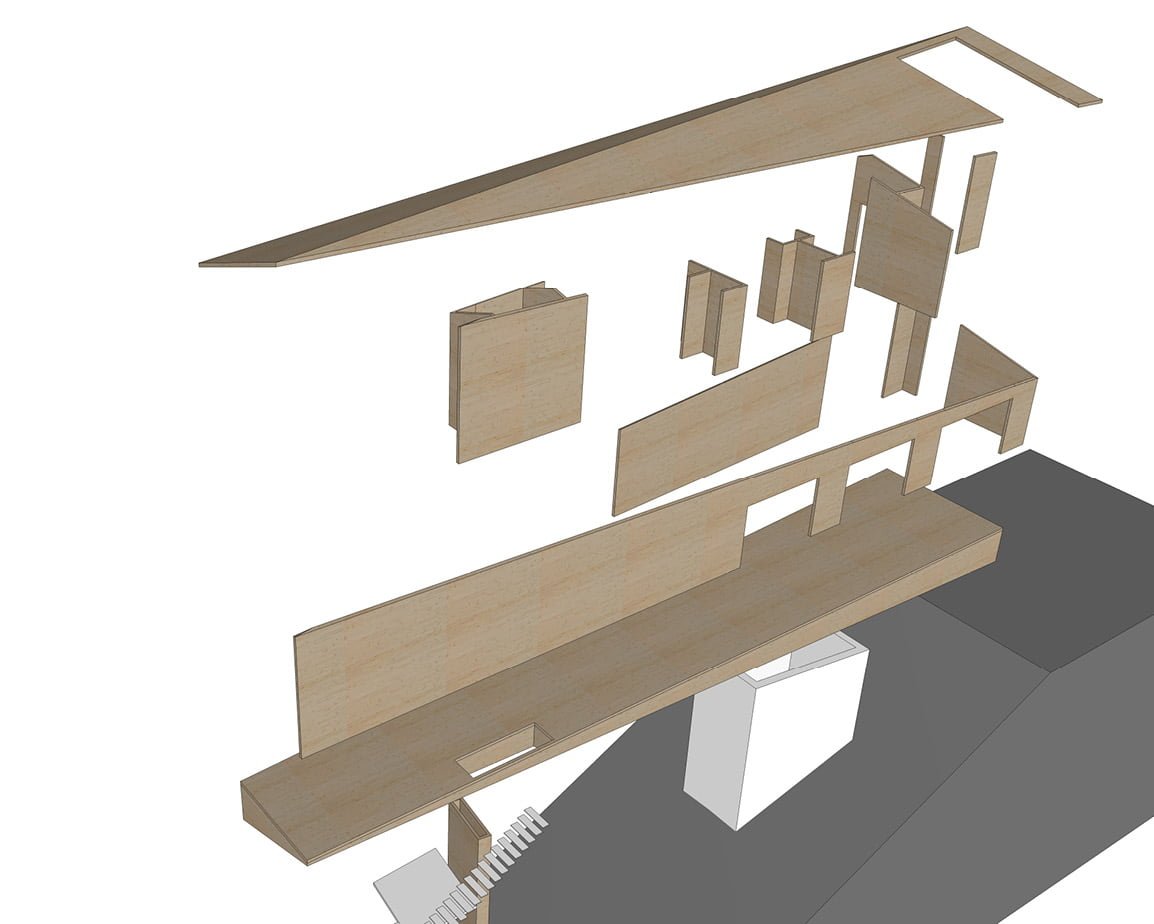CONSTRUCTION PROGRESS ON MORE CLT CABIN
We’re extremely excited to be wrapping up the last stages of construction on one of our most unique projects to date—a cross-laminated-timber (CLT) cabin that projects off the side of a mountain, 20 metres above a lake in La Pêche, Quebec.
View photos and video of the finished cabin >
As with all our designs, we began the project by thinking outside the box in order to manage some considerable pragmatic challenges. The first was a very steep rockface site, which was set back 30 metres from the lakeshore.
Construction on a steep site is usually dealt with by blasting into the slope and enabling something like a walk-out basement, but we knew we couldn’t do that kind of damage to the natural landscape and surrounding vegetation. Our solution was to revisit the zoning of the property: we explained to the municipality that if they allowed us to place one foundation block on flat ground, about 20 metres back from the lake instead of 30, we could be far more respectful to the natural area than if we were farther back.

The design worked out this way: the sole foundation block supports a “mast” that rises 18 metres and supports a long and narrow home above. The home then cantilevers another 10 metres beyond the mast, allowing incredible views of the lake below while minimally impacting the site’s flora and fauna. When we showed the local city councillors our intentions, they were speechless, but they did approve our zoning variance request.
Our first iterations of the m.o.r.e. CLT Cabin design relied on a steel structure, but we ultimately decided that CLT, a construction material we’d used on a prior cottage, would be more appropriate to the natural setting and our efforts to stay in harmony with it. While the home looks nothing like a traditional log cabin, its heavy timber construction makes it a more modern cousin of the iconic Canadian cottage. The CLT was milled off-site and then hoisted into place, minimizing construction time.

For our more technically minded readers, what began as an ethical commitment to minimally impact the landscape also yielded structural innovation, as we used CLT panels in tension to manage the cantilever required to meet the environmental zoning variances of the project. The structural engineer on the home, Dan Bonardi (of Dan Bonardi Consulting Engineers out of Boston), is someone with whom we’ve worked on other complex projects, and, as always, he brought structural poetry to the design. The solution here was to use the thinnest CLT—three-ply—and to increase its capacity for spans by “folding” it.

By way of analogy, consider how a piece of paper has no inherent structural capacity but is made stronger by folding. The 1.5-metre-deep fold of the cabin’s “box beam belly” is exactly the depth needed to yield a box beam with three-ply CLT to create a 30-metre-long structure. The box beam is further stiffened by internal glulam ribs, in a way that resembles the logic of a ship’s hull, and the roof’s folded CLT panels yield a structural ridge that mirrors that of the box beam’s fold. The CLT’s fabrication process was a pragmatic choice: because the shape needed to achieve a structure with sufficient strength in cantilever is complicated and would have been difficult to construct on site, these parts were prefabricated.

The process for creating the 3D fabrication model for milling each CLT part (complete with every single one of the 10,000-plus screw holes at just the right angle), was managed by BC-based design and digital construction studio Styxworks, which allowed the heavy timber parts to then be assembled, Ikea-style, with the help of temporary scaffolding. The log home contractor, Laverty Homes out of Kitchener, Ontario, completed the primary assembly. While CLT, which comprises the bulk of the structure and envelope, costs more than some other materials, it reduces finishing since the panels themselves have a gorgeous finish.

CLT provides good thermal comfort due to its mass and air tightness resulting from its precise joinery. What power the home does consume is provided by solar units; being many kilometres away from municipal roads, the site is totally off grid. Winter heating is provided by a high-efficiency wood stove, and in the summer, cooling is aided by the home’s location above a body of water together with the four-metre height of the interior space, which allows it to capture breezes and cross-ventilation.
In the spirit of giving back to the site and not just thinking about the human occupants, we’re inviting over the neighbours: we’ve fabricated bat “pods” that are being installed onto the mast to be home to thousands of brown bats, whose population in the area has fallen sharply in the last decade. The height of the mast and its proximity to the lake (with all those mosquitoes…) will give the little guys a wonderful and safe flight path home after a big meal.
